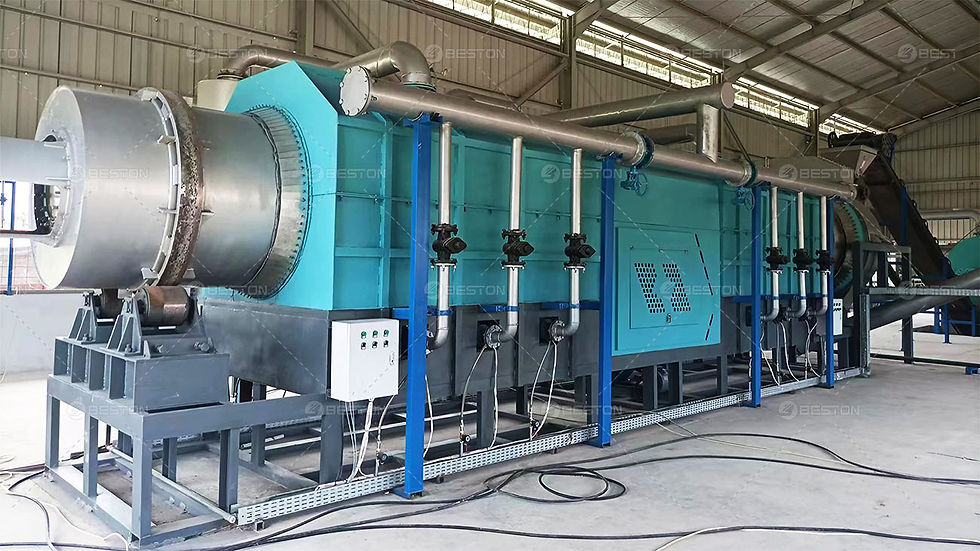Things to Note When Producing Wood Charcoal
- june11433
- Oct 20, 2024
- 3 min read
Producing wood charcoal involves a complex interplay of factors that affect both the quality of the end product and the efficiency of the manufacturing process. Understanding the nuances of this production is essential for ensuring that the wood charcoal meets market demands while minimizing waste and maximizing output. Below are key considerations to keep in mind when undertaking wood charcoal production.
Selecting the Right Wood Material
The choice of raw material is fundamental to the success of the charcoal-making process. Different types of wood yield varying qualities of charcoal, which can influence its application and marketability. Hardwoods like oak, hickory, and maple are typically preferred due to their density, which produces a higher yield of charcoal and results in a more durable product. These woods burn slower, producing charcoal with greater heat retention. In contrast, softwoods such as pine or spruce tend to produce lighter charcoal, but they also contain more resin, which can lead to a less desirable, smoky burn.
The moisture content of the wood is another critical factor. High moisture levels slow down the carbonization process and result in lower-quality charcoal. Ideally, the wood should be air-dried or kiln-dried to reduce its moisture content to below 15%. This ensures a more efficient burn and a more consistent end product.
Understanding the Carbonization Process
The carbonization process is the core of how to make wood charcoal. This process involves heating the wood in an oxygen-limited environment, allowing it to decompose thermally. Controlling the temperature and duration of carbonization is essential for determining the properties of the wood charcoal. The temperature typically ranges between 400°C and 600°C, depending on the desired characteristics of the charcoal. Lower temperatures result in softer, more porous charcoal, while higher temperatures produce harder, denser charcoal with a higher carbon content.
It is important to maintain consistent heating throughout the carbonization process. Fluctuations in temperature can lead to incomplete carbonization, leaving behind partially burned wood that reduces the overall yield and quality of the final product. This is where the use of a high-quality wood charcoal manufacturing machine becomes crucial. Modern machines are designed to precisely control the carbonization environment, ensuring uniformity in the heating process and optimizing the output.

Choosing the Right Wood Charcoal Manufacturing Machine
A reliable wood charcoal manufacturing machine plays a pivotal role in streamlining the production process. These machines vary in complexity and efficiency, but the key factors to consider include capacity, temperature control, and energy consumption. Machines with higher capacity allow for larger batches of wood to be processed at once, making them ideal for industrial-scale operations. However, for smaller-scale operations, a medium-capacity machine may be more cost-effective and easier to manage.
The ability to control temperature precisely is one of the most critical features to look for. Machines that allow for gradual and steady increases in temperature reduce the risk of incomplete carbonization and ensure a higher quality of wood charcoal. Furthermore, energy-efficient machines can significantly reduce the cost of production by recycling heat generated during the carbonization process.
Controlling Emissions and Waste
The process of making wood charcoal inherently produces gases, tar, and other byproducts, some of which can be harmful to the environment. It is crucial to invest in a wood charcoal manufacturing machine equipped with systems that capture and manage these emissions. Some advanced machines include gas purification systems that can collect and condense these byproducts for later use, such as converting tar into fuel or using gas to power the carbonization process itself.
Waste management is another important factor. Leftover wood, ash, or partially carbonized material can either be recycled back into the process or used in other applications. Efficient handling of waste not only reduces environmental impact but also lowers production costs.
Ensuring Consistent Quality Control
Quality control is critical in wood charcoal production to ensure that the final product meets the required specifications for its intended use, whether it's for fuel, industrial applications, or domestic use. Regular sampling and testing of the charcoal during production can help maintain consistent quality. Properties such as fixed carbon content, ash content, and volatile matter should be monitored to ensure that the charcoal is of high grade.
Additionally, the uniform size of the charcoal pieces is important for ease of transport and application. Oversized pieces may need to be broken down, while dust and fines should be minimized to avoid product loss and reduce handling issues.
Conclusion
Producing high-quality wood charcoal requires careful attention to raw material selection, process control, and equipment efficiency. By selecting the right type of wood, ensuring proper carbonization, and utilizing a reliable wood charcoal manufacturing machine, producers can maximize yield, control emissions, and deliver a superior product.




Comments